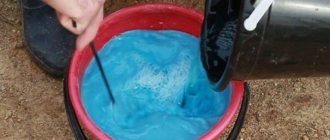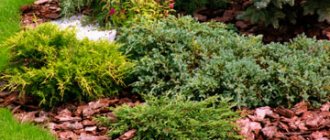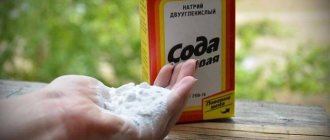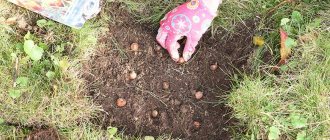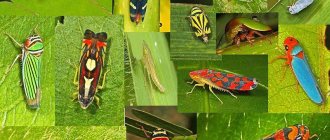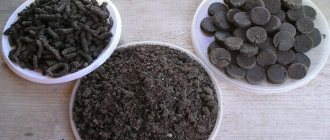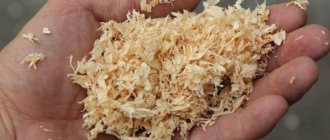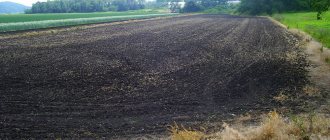Pests and diseases are familiar to many tomato gardeners. Among the simple ways to protect them from diseases is mulching with pine needles and cones. How to increase the yield of tomatoes by mulching with pine needles? We will reveal the main secrets of mulching with pine needles and learn how to apply this technology correctly.
Advantages and disadvantages of using pine needles in the garden
Needles are an environmentally friendly material that does not pollute the environment and does not lead to the accumulation of harmful nitrates. It is available, the required amount can always be collected in the nearest forest.
Disadvantage: pine needles increase the acidity of the soil in the garden plot. Because of this, many gardeners categorically refused to use it. However, adjusting the balance is quite easy - you need to add a little ash, chalk, fluff or dolomite flour. With systematic use, the pH level is checked annually, directing it in the right direction.
Mistakes gardeners make when mulching with pine needles and cones
Common mistakes:
- Gardeners use needles as mulch for all crops on the site. Conifer cones and needles acidify the soil, so they are not used for crops that prefer an alkaline reaction. There are other types of mulch, such as straw and fallen leaves, which do not affect the acidity of the soil in any way;
- Gardeners leave mulch on the site all year round. This cannot be done if the soil acidity is high. The needles are removed from the site in August, and the beds are covered again in early spring. In autumn, worms process needles, which causes the earth to become acidic;
- Along with coniferous litter, which is used as mulch on currants, strawberries, gooseberries, apple trees and other fruit trees, fungal diseases occur: rust, mold, root rot and others. Diseases of coniferous trees spread to garden crops, so before using the mulch, apply any fungicide, for example, Aktoverm or Fitoverm.
Rate the quality of the article. We want to be better for you:
Using pine needles as mulch
Before mulching with pine needles, the area:
- weed;
- loosen;
- watered.
The thickness of the coating depends on the plant:
- under fruit trees - about 15 cm;
- for vegetable crops – 7 cm.
Mulch is placed only on heated soil so that it does not inhibit the penetration of heat into the soil. After harvesting it is removed.
Spruce needles quickly rot. Because of this, it is rarely used for mulching.
Pros and cons of pine mulch
Pine needle mulch has the following advantages:
- forms a dense layer that prevents the growth of weeds;
- does not lose integrity under the influence of wind and rain;
- repels pests - slugs and snails;
- destroys pathogens;
- protects the earth from erosion, maintains natural moisture and air exchange;
- stimulates the growth of garden crops.
Purpose of mulch
Mulch is any type of loose, air- and moisture-permeable, biodegradable material that is placed on the surface of the soil. The use of mulch provides:
- keeping the soil moist for a long time;
- growth retardation of many types of weeds;
- maintaining optimal soil temperature;
- creation of humus through gradual rotting;
- maintaining the vital activity of beneficial organisms inhabiting the top layer of the earth.
Growing plants on soil covered with a layer of mulch gives incomparably better results than without it. The thickness of the mulch should be from 5 to 20 cm. The needles are laid out at some distance from the base of the plant. They only need to cover heated soil.
If you rush to lay mulch in the spring, the ground underneath will remain cold for a long time. The effect of such use will be the opposite - a delay in plant development.
If in spring and summer the purpose of mulch is to protect the soil from drying out and the growth of weeds, and to accumulate heat, then in the fall it is to protect the soil organisms living underneath it from freezing.
Many natural materials can be used as mulch:
- pine litter;
- hay, straw;
- husks from seeds, buckwheat;
- pine nut shells;
- dry last year's leaves;
- sawdust and shavings;
- wood chips from tree bark;
- crushed cones;
- humus, humus, peat;
- freshly cut grass.
It is not easy to buy mulch from natural materials; it is rarely on sale even in specialized stores. Such materials are quite expensive and require renewal after a year, as they decompose in the soil.
Currently, in addition to natural shelters, modern nonwoven materials are used:
- spunbond;
- agril;
- lutrasil;
- Virotex.
They allow moisture to reach the ground and delay its evaporation. Their use is justified by their ease of acquisition and use. But it will not be possible to create real humus under such cover. Such a cover will not provide nutrition to the plant.
By using completely free pine litter, which can be collected from pine forests in any quantity, gardeners receive not only mulch, but also a natural factory for the production of humus.
When raking needles into bags, you can see white mycelium veins under the pine needles. These myceliums provide the soil with enhanced nutrition and protection. Fertility both in the wild and in garden beds is created by soil inhabitants who actively process a thick layer of needles.
Soil inhabitants - fungi, bacteria, small fauna that live under litter, help plants digest and assimilate any organic matter. Plant productivity in such conditions is optimal. After all, if there is no organic matter, there is no soil life, and there is no food for plants.
Using pine needles as fertilizer
Needles can be used as fertilizer, but humus will take 3-5 years to prepare. To speed up the process, it is mixed with other plant residues, mullein (100 kg per 1 m³) and turf soil are added and watered with any microbiological preparation.
If there is no manure, add a urea solution (20 g per 1 liter of water).
The pile is covered with film to maintain a constant temperature. It is periodically ventilated to provide fresh air. As a result, the compost will be ready for use within 1.5 years.
Liquid fertilizer
To prepare liquid fertilizer, the needles are placed in a suitable container, after being lightly chopped. You need to fill it with water and bring to a boil. After boiling for about 10 minutes, the mixture is left to brew for 2-3 days.
After this, the solution is diluted with water in a ratio of 1:10 and poured over tomatoes, potatoes and strawberries. Bushes that were lagging behind in development will begin to grow actively as a result of feeding, and as a result, you can harvest an excellent harvest from all plantings. Strawberries even acquire an unusual and delicate taste after watering.
Using needles to create warm beds
To obtain an early harvest, warm beds are set up on the site. To do this, the planting site is flavored with organic matter using a special technology. When rotting, it releases heat, which warms the roots of plants and accelerates their development.
The preparation proceeds as follows:
- dig a trench about 40 cm deep;
- pine needles mixed with wood ash are placed at the bottom;
- put manure;
- on top - plant residues (weeds, tops);
- pour a small layer of earth.
Then prepare a fertile soil mixture with which to cover the bed. The layer height is about 20 cm. At the end, the area is watered with microbiological fertilizer and covered with black film or non-woven material to retain heat.
This method allows you to plant seedlings 1 month earlier than usual. To protect the above-ground parts of plants, film or spunbond is stretched over the arcs.
Application of pine mulch
In gardening literature you can read about restrictions on the use of pine needles. It has an acidic reaction and over time, with constant use, acidifies the soil. Not all plants like this. Some people need such land, others suffer and get sick in such conditions.
The way out of this situation is very simple. It is worth remembering which vegetables, bushes and trees love such conditions. Raspberries and blackberries tolerate acidic soil well. Slightly acidic soil is suitable:
- for apple trees;
- pears;
- cherries;
- plums;
- quinces;
- gooseberries;
- currants.
Medium acid soil is suitable:
- for strawberries;
- potatoes;
- pepper;
- pumpkins;
- parsnip;
- sorrel.
Pine mulch helps the growth of sunflowers, eggplants, onions and garlic.
Among ornamental plants, hydrangea, rhododendron, all heathers, and roses like coniferous mulch.
In addition, acidic soil can be neutralized by sprinkling slaked lime on the beds in the fall - 50 grams per 1 square meter. m. It is even better to deoxidize the soil with ash, which is a natural supplier of nitrogen.
Pine needles contain natural phytoncides that counteract fungal and bacterial diseases. The needles also contain a huge amount of vitamins and minerals, which gradually pass into the soil.
Raspberries
Mulch from pine needles allows you to grow luxurious crops using biotechnology, which was studied and described by the outstanding Russian land manager Alexander Kuznetsov. Its principle is that plant nutrition is provided by root microbes and fungal mycorrhiza. Microbes and fungi do not live in the arable layer, only in rotting plant residues.
That is, by covering the raspberry beds with pine litter or any organic mulch, they create conditions for a favorable symbiosis between the plant, fungi and microbes. This symbiosis is a living biological product that enhances the breakdown of organic matter and improves plant nutrition.
Raspberry roots secrete substances necessary for the life of mycorrhiza, and mushrooms enrich the soil with nutrients. Pine mulch provides a natural habitat for mycorrhizae.
Its presence makes it possible to increase the planting density from 5 shoots per 1 sq. m. up to 30-40 pieces.
At the same time, the weight of the berry increased from 4-6 g to 10-12 g. Fruiting of remontant raspberries instead of August begins in mid-July.
In beds that are mulched annually, plants either do not get sick at all or the disease is mild. With such agricultural technology, fertilizers, frequent watering, and chemicals for baiting pests are not needed.
Strawberry (strawberry)
When using Kuznetsov’s biotechnology, strawberries instead of ordinary berries weighing 40 grams produced berries weighing 65 grams. The harvest increased by 1.5 times. Mulch, among other things, plays the role of an antiseptic; strawberries do not suffer from any diseases.
Unlike straw mulch, pine needles will prevent slugs from getting close to the berries. Mice won't live in it either. The mulch layer should be at least 5-7 cm high.
Lingonberries, blueberries, cranberries
Growing these crops is gradually becoming fashionable. Small plantations are planted in fenced beds covered with peat. For good development of plants, they are watered with acid-containing solutions. Covering such plantings with coniferous mulch is a mandatory procedure.
Onion and garlic
It is recommended to cover the beds with these plants with pine litter. Needles will not only retain moisture and prevent weeds from sprouting, but their phytoncidal properties will save plants from fungal and bacterial diseases. From mid-May, the beds are covered with a dense layer of pine mulch. At the same time, work on watering and loosening the beds is reduced.
It is very good to cover the roots of berry bushes, fruit trees, grapes and strawberries with pine mulch for the winter. Protecting from icy winds and low temperatures, it prevents the roots from suffocating from lack of oxygen. Many other protective structures become winter quarters for rodents. The needles will not allow them to settle in shelters built for grapes and roses.
Using pine needles as a safe and effective insecticide
Pine concentrate, diluted with water in equal parts, works as an insecticide. Additionally, put soap in it - 2 tsp. for 10 l. This product does not burn the leaves and does not reduce the quality of the crop.
The liquid is sprayed onto the affected areas. For prevention, treatment is carried out three times per season:
- with swelling of the kidneys;
- during the budding period;
- after flowering.
The solution is effective against:
- codling moth;
- aphids;
- moths;
- fleas;
- leaf rollers;
- raspberry-strawberry weevil.
The use of needles demonstrates excellent results when cultivating potatoes. It protects the crop from diseases, repels mole crickets and wireworms.
Many people use pine infusion to successfully fight the Colorado potato beetle.
To get the result, a handful of fresh or last year’s needles are placed in the hole when planting. A little wood ash is poured on top, then a tuber is placed. For 10 acres you will need about 2-3 bags of raw materials.
To protect cabbage plantations from caterpillars, the composition is prepared differently:
- 1 kg of pine needles is crushed together with branches;
- cook in 3 liters of water over low heat for 15-20 minutes;
- cool, filter;
- dilute in a ratio of 1 to 4, add soap.
Treatment is carried out regularly - every 1.5-2 weeks.
Mulching
A layer of mulch 3 cm thick retains moisture well and prevents weeds from growing. The needles get wet a little - water passes through them into the soil. Slugs do not grow under the needles; they are repelled by the aroma of essential compounds.
Coniferous mulch has healing properties: it prevents fungal diseases. Compared to other shelters, needles are superior - they have a longer shelf life. This mulch does not need to be changed too often.
If you are concerned about soil acidification, use pine litter only for crops that prefer slightly acidic soil. These are rhododendron, hydrangea, blueberry, cranberry and lingonberry. You can mulch a flower bed where roses, lavender and tulips are planted.
Using pine needles to preserve crops
Needles extend the shelf life of root vegetables. Thanks to their disinfectant properties, they prevent the formation of mold and prevent rotting. Only dried pine needles are suitable for this. It is placed at the bottom of storage containers and placed between vegetables.
Mulching with pine needles is an effective agricultural technique that makes it easier to grow crops in gardens and vegetable gardens. Knowing the characteristics of the material will help you avoid negative consequences, and its versatility will allow you to save on the purchase of expensive crop protection products.
How to mulch with pine cones and pine needles?
Pine needles are used to mulch paths in the garden to keep weeds away.
Pine cones are scattered after crop germination. They are scattered in a layer of 10-15 cm around flowers, berry bushes, vegetable crops and fruit trees. When used for annual crops, strawberries or strawberries, the cones are removed from the beds for the winter. Under perennial crops, mulch is left until it rots. Mulch is added as needed, and in the spring it is mixed and loosened.
Oils
Thuja oils are divided into several types, depending on their purpose:
- essential oil;
- homeopathic (can be dropped into the throat and nose);
- aroma oils.
Essential oils are only allowed for spot application (for example, to get rid of papillomas), since they are a super-strong healing agent.
Homeopathic oils have a wide range of applications: for respiratory diseases (sinusitis, bronchitis, asthma), rheumatism and varicose veins, adenoids, skin diseases (lichen, itching, warts, eczema, papillomas), for normalizing digestion and the genitourinary system, cleansing the body of toxins , wound healing.
Aroma oils relieve fatigue, calm, increase concentration, and are used to prevent colds and flu.
The diverse medicinal properties of thuja are causing the return of medical interest in this plant. You can even prepare medicine from needles, sprouts, cones or bark at home. The main thing is to choose the right concentration.
Video about the medicinal properties of thuja
Litter from pine, thuja and other coniferous plants can be successfully used on the site for a variety of purposes.
Canadian scientists have found that thin branches of conifers contain up to 75% of all nutrients. There are an order of magnitude more sugars than in the wood of the trunks, there are proteins and an ideal ratio of nitrogen and carbon.
Winter shelter for plants
Conifer needles are an ideal cover for grapes, climbing roses, hydrangeas, azaleas and clematis. The vines are removed from the supports and laid directly on the ground. The branches of the bushes are bent to the soil and secured. Then the flower beds are covered with dried pine and spruce needles. You need to lay out the film on top and press down its edges.
It is also better to wrap beds with vegetables and flower beds with bulbous crops. The root system of fruit tree seedlings can be sensitive to cold weather. Here bags filled with needles will be used. They perfectly protect the root, part of the stem, and even protect trees from rodents.
For harvest storage
Pine, spruce and fir needles have properties to suppress fungal diseases. The needles contain phytoncides, special substances that negatively affect the microflora. Therefore, the natural component can be poured into the bottom of boxes for storing vegetables and fruits. This only improves the taste of the product, and the natural antiseptic will help keep the harvest intact until it is consumed.
Well-dried pine needles are poured into a container with a layer of 2-3 cm. Then they put it in root vegetables: potatoes, carrots or beets, then again a layer of litter, and so on until the box is full.
